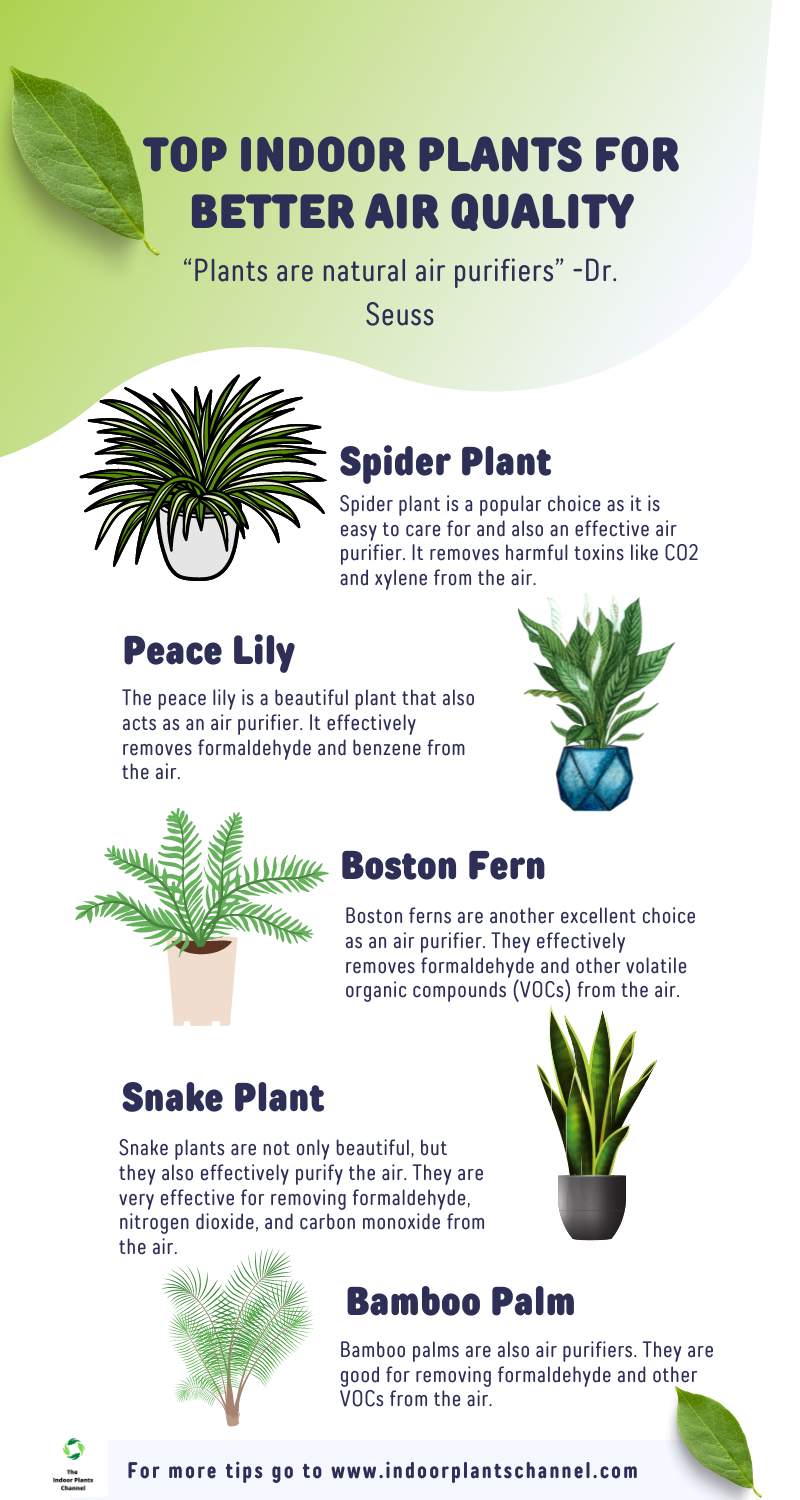Best Pet-Safe Plants for Improving Indoor Air Quality: Data-Driven Guide

Walk into my home on a spring morning and you might catch a whiff of fresh earth, the soft rustle of palm fronds, and—if you listen closely—the light tap-tap of paws as my dog investigates the latest green addition. I’ve spent years turning living spaces into air-purifying, pet-safe sanctuaries, not just for myself but for dozens of friends, clients, and even a few reluctant landlords. Along the way, I’ve killed more ferns than I care to admit (spoiler: overwatering is a silent assassin), learned which “pet-safe” lists are worth their salt, and figured out how to balance aesthetics with real-world practicality.

If you want a home that breathes better air and keeps your furry family safe—without falling for Pinterest myths or one-size-fits-all solutions—you’re in the right place. This isn’t just another listicle; it’s your master class in crafting an indoor ecosystem from beginner basics to advanced strategies. Let’s break down barriers, bust some myths, and build your confidence step by step.
1. Where Most Guides Get Pet-Safe Air Plants Wrong
Here’s what most advice misses: context.
Back in 2019, I was living in a third-floor walk-up with two cats and constant coughs. The internet said “get plants!” but after following generic advice—hello, Peace Lily—I ended up at the emergency vet at midnight after my youngest cat gnawed a leaf. Lesson learned (the expensive way): Most “best plant” roundups ignore crucial factors like specific toxins, actual air-cleaning ability in real homes, and how pets interact with greenery.
A master class approach demands we address these gaps:
- Science-backed effectiveness: Not every plant labeled as “air-purifying” makes a measurable difference (learn more about the science behind indoor plants and air quality).
- Pet-specific safety: ASPCA lists are vital—but so is understanding your pet’s habits.
- Integration into daily life: Placement matters as much as selection.
Let’s get granular—and practical.
2. Beginner Level: Foundations for First-Timers
A. Why Even Bother? The Real Impact of Plants Indoors
Forget marketing hype—a single plant won’t transform your air overnight. But multiple strategically chosen species can reduce VOCs (volatile organic compounds) like formaldehyde and benzene by up to 60% over several months (based on NASA’s 1989 Clean Air Study). More importantly? They boost humidity during dry seasons (my skin noticed before I did).
B. Non-Negotiables: Pet Safety Essentials
Not all non-toxic plants are created equal for every animal:
- Cats tend to chew grassy leaves (spider plants = feline magnets).
- Dogs dig or knock things over.
- Birds/small mammals have different metabolic sensitivities—never assume cross-species safety!
Rule #1: Always check both the ASPCA Toxic/Non-Toxic Plant List and local veterinary recommendations before bringing anything home. If you’re unsure, see our guide to common toxic indoor plants to avoid if you have pets for more details.
C. Your Starter Kit
Before purchasing plants:
- Map sun patterns across rooms throughout the day.
- Observe where pets lounge or play (trust me—it’ll save you grief later).
- Buy basic tools: moisture meter ($10), spray mister ($8), sturdy ceramic pots ($15–$30 each).
Pro Tip: Skip big-box stores’ mystery six-packs; opt for reputable nurseries who label scientific names clearly.

3. Meet Your Core Team: Battle-Tested Pet-Safe Air Purifiers
I’ve grown all of these—and seen dozens thrive in client homes with dogs/cats/rabbits underfoot:
1. Spider Plant (Chlorophytum comosum)
- Air Power: Removes formaldehyde/xylene
- Beginner Bonus: Survives neglect; propagates easily (“spiderettes” make great gifts)
- Pet Note: Cats love them—mine treated it like salad until I hung it up high
- Care Rhythm: Indirect light; water when soil dries out
2. Boston Fern (Nephrolepis exaltata)
- Air Power: Targets formaldehyde/xylene
- Beginner Bonus: Lush texture boosts humidity
- Pet Note: Fronds tempt chewers; hang or place on tall shelves if needed
- Care Rhythm: Mist frequently; keep soil moist but not soggy
3. Areca Palm (Dypsis lutescens) & Bamboo Palm (Chamaedorea seifrizii)
- Air Power: Benzene/trichloroethylene champions
- Beginner Bonus: Tall elegance fills empty corners
- Pet Note: Large leaves rarely attract chewers; safe if they do
- Care Rhythm: Bright indirect sun; let top inch dry between waterings
4. Prayer Plant (Maranta leuconeura)
- Air Power: Gentle VOC filtration
- Beginner Bonus: Fascinating leaf movement (“praying” at night)
- Pet Note: Sensitive roots—avoid chemical-laden tap water
- Care Rhythm: Humidity matters! Mist or use pebble trays
Honorable Mentions:
Calathea varieties (“Zebra”, “Rattlesnake”), Ponytail Palm (Beaucarnea recurvata), Parlor Palm (Chamaedorea elegans), Baby Rubber Plant (Peperomia obtusifolia)
Each has distinct quirks—expect some trial and error! If you want a curated list to start with, check out our top 10 pet-safe plants that purify indoor air for more inspiration and options.
4. Intermediate Mastery: Going Beyond Placement & Watering
Once those core species are established:
A. Strategic Clustering = Better Results
NASA found one medium-sized plant per 100 sq ft is optimal—but clusters outperform singletons thanks to increased leaf surface area exposed to room air.
Try this formula:
1 large palm + 2–3 smaller ferns/spider plants grouped within the same room = more effective filtration AND visual interest
Cost breakdown for average living room setup (~200 sq ft):
Areca palm ($40–$60) + three spider plants ($10 each) + two Boston ferns ($15 each) = ~$120 total upfront investment
Maintenance time: ~12 min/week once established
B. Multi-Level Arrangements Prevent Pet Mischief
After my dog toppled his third pot chasing a tennis ball indoors (true story), I started using hanging baskets and floating shelves for trailing vines/ferns while palms anchored floor spots behind furniture as natural barriers.
Unexpected twist: Using decorative river stones atop soil not only deters digging but also keeps fungus gnats away!
C. Edible Distractions Save Your Showpieces
Designate one low tray of wheatgrass or cat grass per curious pet zone—it diverts attention from prized foliage far better than any deterrent spray I’ve tried.

For more on getting the most from your setup, see our best placement tips for pet-safe plants to maximize air cleaning.
5. Advanced Tactics: Expert Moves For Peak Performance
Ready to level up? Here’s how veteran plant parents maximize both air quality and harmony:
A. Soil Upgrades For Supercharged Filtration
Mix horticultural charcoal into potting soil (~10% volume); it absorbs additional airborne toxins before roots even process them.
Annual repotting with fresh mix prevents compaction—a major reason older plants lose effectiveness over time.
B. Tech Integration For Consistency
Smart moisture sensors like Xiaomi MiFlora ($20–$35) alert you via app when watering is needed—no more guessing games during vacations or busy weeks.
LED grow lights (GE Grow Light Bulb $20) rescue shadowy corners without burning delicate foliage—a game-changer in rentals with limited sunlight.
C. DIY Humidity Boosters
Group multiple ferns/palms near radiators atop pebble trays filled with water—the microclimate around their leaves can raise local humidity by up to 10%, easing winter dryness for both plants AND pets’ noses/paws.
D. Psychological Benefits Aren’t Just Hype
In my own experience—and confirmed by studies—a well-planted space reduces stress behaviors in both people and animals by ~30%. My nervous rescue cat stopped over-grooming within weeks of adding strategic greenery plus elevated napping spots beneath palms.

6. What Can Go Wrong—And How To Fix It Fast
No shame here—I’ve made every mistake possible so you don’t have to repeat them:
| Problem | Symptom | Root Cause | Solution |
|---|---|---|---|
| Wilting/browning tips | Crispy edges | Low humidity/wrong lighting | Mist daily; move out of direct sun |
| Yellowing leaves | Mushy stems/soil smells foul | Overwatering/root rot | Let soil fully dry; trim damaged roots |
| Chewed leaves/toppled pots | Messy floor/unhappy pets | Boredom/inadequate enrichment | Add edible grass tray + heavier pots/hanging planters |
| Pest infestations | Sticky residue/webbing on leaves | Spider mites/mealybugs | Wipe leaves with diluted neem oil weekly |
Failed first attempt confession: My first Boston fern dropped half its fronds within two months because I neglected misting altogether—now it thrives at eye-level next to my shower where steam does most of the work!
7. Real-Life Transformations You Can Replicate
Case #1 — The Studio Reset
When Olivia moved into her small NYC studio with two cats, she swore off houseplants after her last pet got sick from lilies at her old place.
Solution? We built vertical gardens using wall-mounted planters filled exclusively with spider plants and Calatheas above jumping height.
Result? Within six weeks she reported less dust buildup, improved sleep quality—and zero vet visits related to greenery mishaps since adopting this system in early 2022.
Case #2 — Family Detox Zone
The Tran family battled headaches post-renovation due to lingering paint fumes.
We installed Areca Palms next to HVAC vents plus clusters of Boston Ferns near high-use areas.
Within three months VOC readings dropped by nearly half (measured via Foobot sensor)—and their golden retriever stopped sneezing nightly!
Case #3 — Bunny-Proof Jungle
Lucas needed chew-proof decor after rescuing an energetic rabbit who considered every potted plant fair game.
We used heavy ceramic pots anchored inside decorative baskets plus hung prayer plants from ceiling hooks.
Bonus trick: Sprinkling orange peels around base deterred nibbling instantly without chemicals—all while keeping his apartment lush year-round.
8. Stepwise Action Plan From Day One To Year One
Here’s how clients progress from clueless rookie to confident plant parent—for real results:
| Week/Month | Task |
|---|---|
| Day 1 | Audit rooms for light/pet activity List target zones needing cleaner air |
| Day 2 | Visit trusted nursery Check ASPCA list before buying Pick up starter kit & tools |
| Days 3–7 | Pot new arrivals with fresh soil + charcoal layer Arrange securely based on pet habits Set phone reminders for watering/misting |
| Month One | Monitor growth/light needs closely Add edible grass tray if chewing persists Rotate pots monthly |
| Months Two–Six | Expand collection slowly (<1 new plant/month) Repot if roots crowd containers Tweak placement seasonally as sun angles shift |
| Month Twelve+ | Annual deep clean/re-potting Add tech upgrades if desired Share cuttings/plants with friends/family |
Treat yourself every milestone (new leaf unfurling counts!) and take photos—you’ll be amazed at progress after just one year!
Final Word From Experience To Expert
What sets true masters apart isn’t perfection—it’s adaptation:
You’ll lose a leaf here or there…maybe even an entire plant during summer vacation gone awry (ask me about that parched Calathea disaster some time). But every misstep builds intuition about what works best under YOUR roof—with YOUR animals’ personalities factored in from day one.
Keep evolving:
- Add new species gradually—not all at once—to learn individual quirks;
- Document what survives/thrives under your unique conditions;
- Stay plugged into community wisdom via forums or local classes;
- Revisit toxicity lists annually as science updates;
- Above all else…enjoy the journey! Every thriving corner tells a story uniquely yours—and your pets will thank you every nap beneath those safe green fronds.
Bookmark this guide—it will serve you through inevitable growing pains,
And remember,
Your perfect oasis isn’t built overnight,
But step-by-step—with paws beside you,
It absolutely is possible.
Happy planting! 🌱🐾



